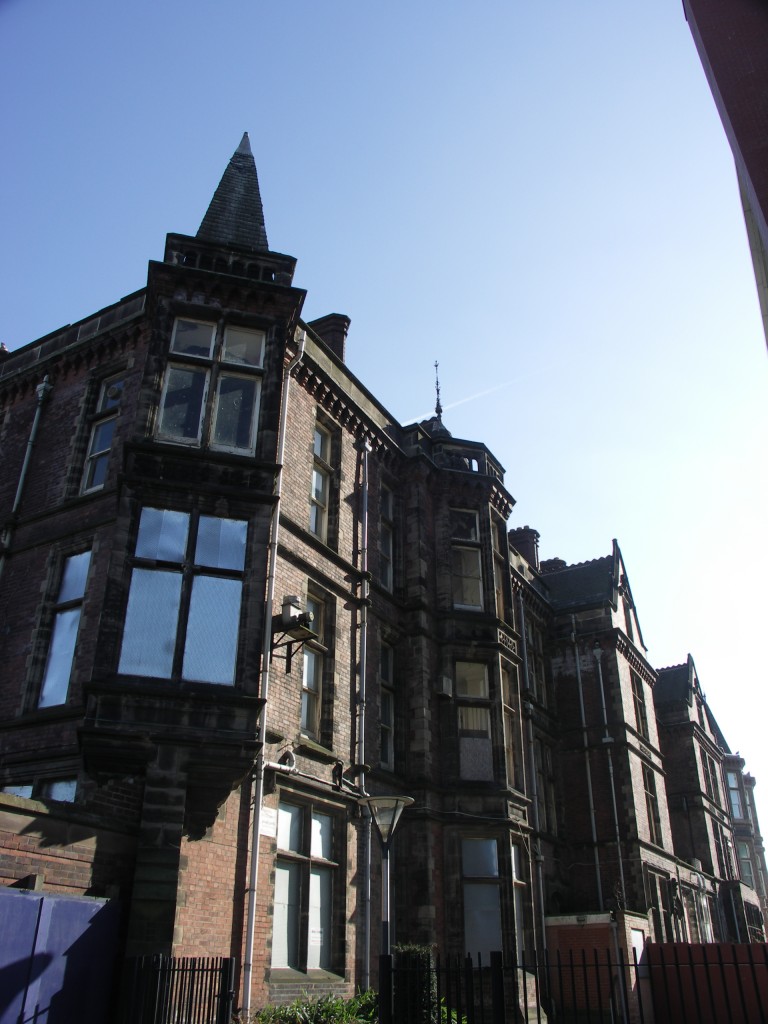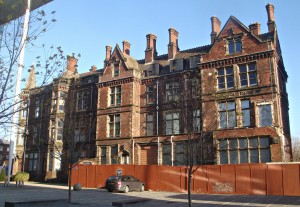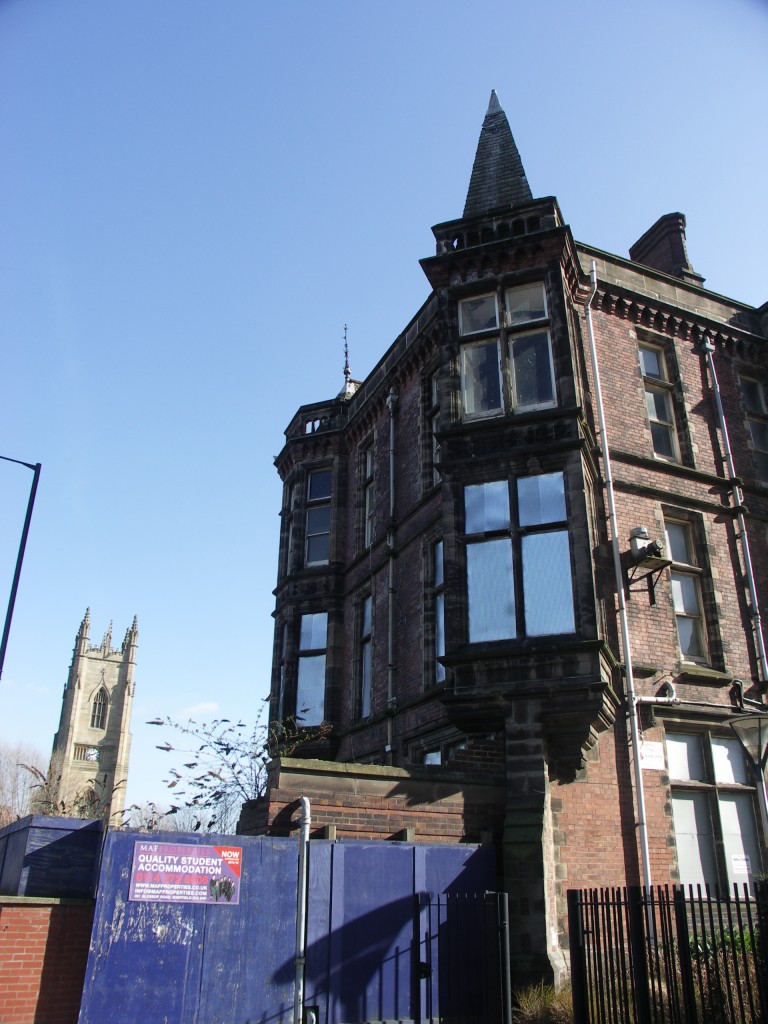PLEASE CLICK HERE TO SIGN THE PETITION TO SECRETARY OF STATE ERIC PICKLES TO SAVE THIS BUILDING
With perhaps a little as one week left before a decision is reached, we are urging all MPs with an interest in preserving our Nation’s Heritage to act and bring the importance of this case to the attention of Eric Pickles.
Since last December we have unearthed a bizarre trail of evidence that shows Sheffield City Council Planning Officers were strongly opposed to Sheffield University’s plans to demolish the Grade II listed Jessop Edwardian Hospital building to gain extra 10% space for a new Engineering building. They had been instructed to ‘recommend’ the application. The planning reports are a strange documents – they keep restating the ‘brief’ (the requirements) of the applicant, whilst at the same time criticising the design and the conservation implications. We now know what the planning officers thought of the ‘brief’ – they thought is was completely unacceptable. We know, via FOI, that the Head of Urban Design and Conservation unreservedly condemned the proposals and summed up the view of his colleagues also:
As you are all too aware my view (reflected by that of CAG, the Design Panel and fellow officers) is that the proposals for Jessop east have both serious conservation implications and constitute poor design and should therefore be refused in accordance with the NPPF. However, I fully understand that the economic benefits are considered to outweigh such concerns.
You have a difficult job but to ensure that we do not look foolish as an authority and do not make it impossible for us to refuse proposals on design grounds in future we have to be very clear about the balance that is being struck and the failings of the proposals.
I’ve done my best to think of some positives but have come up with very little. My central thought is that you could frame your report in terms of the views presented to you by the applicant ie using phrases such as ‘it is claimed that’, ‘the approach is based on the concept that etc without commiting SCC to sharing in this belief/approach. Sorry, you will be doing this already, but I’m really struggling to find anything I consider positive. Perhaps the following:
 The planning reports, with their ‘recommendation’ to allow an important part of Sheffield’s Heritage be destroyed, pin everything on an argument about public benefit. The case put forward is entirely economic, that an extra 10% space gained by demolition of an important listed building, will create a boost in investment in the City that can justify the permanent loss of an historic building which is vital to Sheffield’s Heritage and the Nation’s Social History. At the first committee meeting where this application was discussed, SCC Head of Planning agreed with Councillor David Baker (who voted to decline the application) that the extra space gained by demolition would allow for approximately 90 extra engineering students per year.
The planning reports, with their ‘recommendation’ to allow an important part of Sheffield’s Heritage be destroyed, pin everything on an argument about public benefit. The case put forward is entirely economic, that an extra 10% space gained by demolition of an important listed building, will create a boost in investment in the City that can justify the permanent loss of an historic building which is vital to Sheffield’s Heritage and the Nation’s Social History. At the first committee meeting where this application was discussed, SCC Head of Planning agreed with Councillor David Baker (who voted to decline the application) that the extra space gained by demolition would allow for approximately 90 extra engineering students per year.
The University’s proposals are one sided – the only detailed analysis is reserved for their preferred option. Their attempts (if you can call them that) to consider alternative use were rejected by another council officer (the only comment in the planning file from an officer consulted about the reliability of the University analysis):
“. In the absence of the proposals of the University I do think that the property could eventually be converted to a mixed use scheme with residential use on the upper floors and a bar/ restaurant on ground floor…
…in particular there are several references to the fact that the University does not wish to sell the property and that if it did so it would include restrictive covenants in any sale document preventing anything other than educational use. That may well be factually correct but the point of the exercise would be to determine whether there is a viable alternative use which could be found for the property rather than demolition. To restrict uses in this way would make that even more difficult and so the appraisals in the report based on that assumption are not strictly relevant in this context….
…
The appraisal based on academic and office space that includes the adjoining land makes a marginal loss of £16,375. Minor changes to some of the cost and value assumptions would make this a positive figure which whilst not generating a large profit could be marginally viable.
The cost and value assumptions in the hotel are in my view somewhat pessimistic and with different assumptions a different residual would arise as opposed to the £2.6 million loss shown but I do accept that this may not currently be a viable option
My biggest question is with the student housing appraisal and in particular why this appraisal does not include the adjoining vacant site. Whilst I have not run an appraisal I do find it very difficult to believe that the site and listed building if marketed together would not produce a viable development.
There are statements in the report that such a use would not be ‘achievable for planning reasons’. From our discussion I understand that whilst this would not be the preferred use, it could not be refused on policy grounds.”
The University’s agent, Chris Miele, favoured by Tesco for getting their supermarkets into ‘sensitive locations’, had the University asserting a particular reading of NPPF para 134, about ‘public benefit’ – that the Edwardian building was an insignificant extension and not a principle listed building, and therefore the public benefit created by a 10% gain in space would exceed the loss suffered by demolition of the Edwardian building. This view of the inferior status of the Edwardian building has been roundly rejected by all those consulted, the Council’s Conservation Officers, and indeed the University’s historical report also contradicts this assumption.
Sheffield City Council, have then, in their eagerness to approve the University application, put forward their own argument to justify demolition – a reading of NPPF para 133. That is, despite the fact the building is a principle listed building, the loss suffered would still be outweighed by the economic gains of the 10% boost in space offered by demolition. Yet this is against the advice of their own planning officers and advisers. The advice from their own planning officers was for a more conventional and responsible understanding of NPPF para 133 – that only when alternative uses, and owners, of a building had been discounted, only then could demolition be even considered. The same point is roundly made by Sheffield City Council’s own Sustainable Development and Design Panel in their report.
We have to ask – who at Sheffield City Council actually gave the order to pass these plans, given the objections raised by the planning department, and given that the heads of Planning and Development at the Council had, after protracted negotiations with the University, signed off a letter instructing the University to come back with a scheme which protected the Listed Edwardian building.
We know the University did not conduct case studies for schemes involving retention of the Edwardian building. There is no comparative analysis that shows what that extra 10% space gained by demolition could really achieve, in the public interest, over a scheme which preserved this Grade II listed building. That is a very basic requirement, to know what is being achieved in the public’s interest by demolishing their heritage. Arguments about Public benefit are value judgements, but if the Council, in adducing NPPF para 133, can’t even demonstrate that any evaluation of the various factors of public benefit have been considered, this leaves their argument – to repeat, not an argument the University put forward – fatally flawed.
Sheffield Labour MPs were reported by MP Paul Blomfield to all be behind this scheme in April 2012, well before the application was even submitted. We urge them now to reconsider their position in the light of what has since emerged and the obvious uproar this has caused in Sheffield. However all eyes are now on this case at a National level, for if this application gets passed it will be a very conspicuous signal that really no Grade II Listed buildings are safe. The very meaning of a listed building is under threat if a listed building can really be destroyed on the basis of what is no more than an argument for Convenience, rather than any necessity.
We urge Eric Pickles to call this application in and see that good sense prevails.




